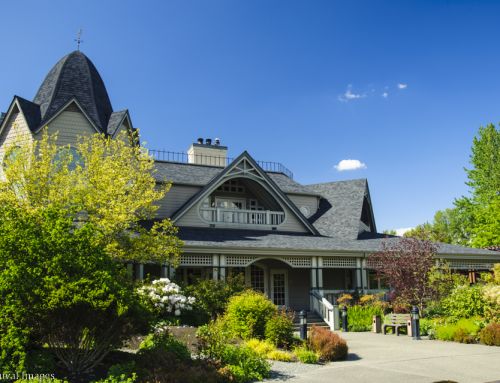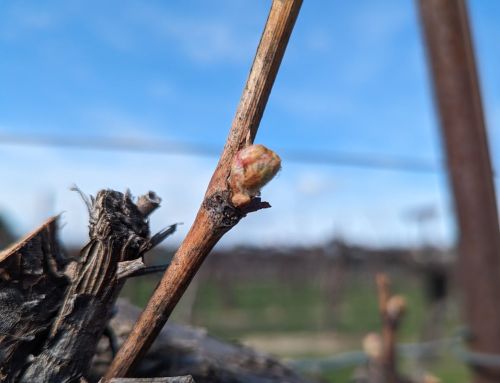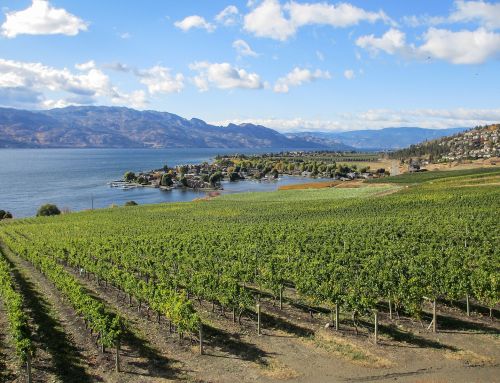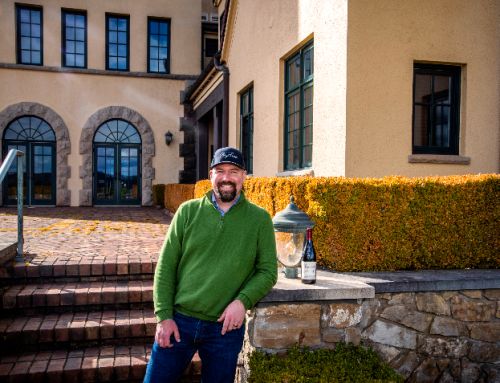Chateau Ste Michelle, the Pacific Northwest’s largest winery by a mile, has put its flagship Woodinville property up for sale. The 118 acre site, which includes the iconic chateau that adorns the winery’s labels, was listed earlier this month by CBRE Inc., a commercial real estate company based in Dallas, Texas. The price has not been disclosed. The winery will also move all of its white wine production, which has previously been taking place in Woodinville, to eastern Washington.
“With this change to our winemaking operations, we are evaluating how to best utilize the facility going forward, including exploring a potential sale of our Woodinville property, or perhaps a portion of it,” Ste Michelle said in a statement to media. “While a sale of the property has not been predetermined, we are considering all options as we continue to look for ways to improve how we produce our wines, strengthen our commitment to sustainability, and grow the Chateau Ste Michelle brand.”
The property listing includes Ste Michelle’s chateau, tasting rooms, a banquet facility, office space, a theatre, a 100,000+ square foot warehouse, and 50,000 square feet of barrel storage. The listing states that the expansive property is “primed for redevelopment and can accommodate a variety of uses, such as industrial, residential, office & life science, all of which are in short supply in Seattle’s burgeoning Eastside.”
Ste Michelle’s 1M+ case white wine production will move to its Canoe Ridge winemaking facility in eastern Washington’s Horse Heaven Hills starting with the 2022 vintage. Given the sheer size of its white wine efforts, presumably other facilities will be used as well. Ste Michelle’s red wine production has taken place at Canoe Ridge since 1993. That site has occasionally had a tasting room over the years but is not currently open to the public.
This is no doubt true. The winery’s enormous white wine production has always required coordinating with numerous other businesses to provide fermenting juice and to a lesser extent finished wine to its Woodinville hub, far from where the grapes are. However, Ste Michelle no longer producing any wine at its giant facility in Woodinville would surely beg the question of whether the property was being used to its fullest value. The grounds are far too large and expensive to retain as only office space and a tasting room.
Founded in 1967, Ste Michelle Vintners moved to Woodinville from Seattle in 1976, building a chateau and rebranding itself Chateau Ste Michelle. The property, originally called Hollywood Farm, had been owned by lumber baron Frederick Stimson (1868-1921).
Presumably if Ste Michelle were to sell the property in full, the winery would look for another space in Woodinville to call home. The winery is too synonymous with the town to not retain a strong presence there. If it were to fully leave Woodinville, the effects on the area, western Washington’s wine industry, and Washington wine more generally would be incalculable.
Over 300,000 visitors come to Ste Michelle each year, for tastings and annual summer concerts on the lawn. These visitors drive tourism to the town’s wineries, restaurants, and other businesses. If that were to cease or even greatly diminish, every winery in the area – and truly every winery in Washington – would be affected to varying degrees.
Sparkman, who has an international environmental policy degree and who also served as an agroforester in the Peace Corps, takes the long view. “These things happen in ecosystems where the mother log breaks down and eventually goes away, and it’s built this thriving ecosystem around it.”
Ste Michelle emphasizes that it is not fully committed to selling its Woodinville property. Rather, it is exploring selling all or part of it. The winery says, “This process is still in the exploratory phase and could take years to implement, if at all.”
Given the size and scale of the property as well as the complexities of its zoning, any sale and subsequent changes would surely not happen quickly. Of note, over half of the existing property is only zoned for residential use. Additionally, the Stimson Manor residence and original Hollywood Farm property are listed in the National Register of Historic Places which might provide some limited protection.
The listing of the property comes as Ste Michelle Wine Estates, the parent company of Ste Michelle, has fallen on hard times in recent years. Formerly owned by tobacco giant Altria, the company announced a $292 million inventory write-off as well as $100 million in losses on non-cancellable grape purchases in 2020. Case production has decreased by more than 1.2M since 2016. The winery, which owned or controlled 70% of Washington’s wine grape acreage 10 years ago, now controls less than 50%.
In 2021, Ste Michelle was purchased by Sycamore Partners, a New York-based private equity firm, for a reported $1.3B. While the company indicated at the time its intent to invest and grow the business, a commitment that is believed to remain, the sale brought much handwringing in the industry that the company and the “string of pearls” that former CEO Ted Baseler helped create might be sold for parts and quick financial gain. Baseler retired in 2018 after 34 years at the company, including 17 as president and CEO. The company has had two CEOs since.
However, the hope was that the purchase by Sycamore would instead allow Ste Michelle to regain its footing and reestablish itself as Washington’s flagship winery while growing the brand. That might still happen, particularly if Sycamore invests significantly in the winery’s growth. However, Sycamore putting Ste Michelle’s namesake property up for sale seems an ominous turn.
There is also an age-old saying in the state’s wine industry that ‘As Ste Michelle goes, so goes Washington wine.’ If true, these changes might augur hard times ahead for the state’s vintners.
At the same time, many other Washington wineries are currently flourishing, with some of their best sales years ever recently. Other major players, such as Jackson Family Wines, are showing interest in Washington and might eventually fill some of the vacuum created by Ste Michelle dropping vineyard acreage. Jackson Family purchased its first vineyard in Washington earlier this year. Ste Michelle pulling back from thousands of acres of vineyard contracts in recent years has also opened up opportunities for others, though no winery as of yet has shown Ste Michelle’s once insatiable appetite for fruit.
Whether Ste Michelle’s Woodinville property is ultimately sold or not, the winery currently being in the doldrums means Washington’s 1,000-plus wineries that have followed the company’s lead for decades now have to focus on fending for themselves. That said, an increasing number of wineries are well-positioned to do so.
In the end, for many, Ste Michelle and the chateau itself are synonymous with Washington wine. If the company ultimately sells the chateau and its grounds, it will leave a hole in the heart of Washington wine that will never be mended. Moreover, what is Chateau Ste Michelle if it has no chateau? The company and brand would surely continue on in Woodinville or elsewhere, but the lights would go out on Ste Michelle’s shining chateau and grounds.









In the interest of completeness, here is the entire statement from Chateau Ste Michelle, much of which was quoted in the article:
At Chateau Ste. Michelle, we continually strive to craft high-quality, flavorful, award-winning wines while always looking for ways to improve how we produce our wines and strengthen our commitment to sustainability. We recently made the decision to consolidate our white wine production in Woodinville to our Eastern Washington facilities, where we make our Chateau Ste. Michelle red wines, starting with the 2022 harvest. Producing wine in Woodinville so far removed from our Eastern Washington vineyards has resulted in decades of shipping millions of gallons of white wine to our Woodinville facility and burning nearly 75,000 gallons of diesel through over 1,600 freight trips each year.
With this change to our winemaking operations, we are evaluating how to best utilize the facility going forward, including exploring a potential sale of our Woodinville property, or perhaps a portion of it. While a sale of the property has not been predetermined, we are considering all options as we continue to look for ways to improve how we produce our wines, strengthen our commitment to sustainability, and grow the Chateau Ste. Michelle brand. This process is still in the exploratory phase and could take years to implement, if at all. In the meantime, we will continue to make world-class Chateau Ste. Michelle wines from Washington’s top vineyards, host exciting wine experiences in our tasting room, and welcome the community to our 2022 Summer Concert Series.
I hope the permit process takes forever
It’s awful imagining the drastic changes that are incoming
And hard to process such monstrosities taking over such a peaceful oasis